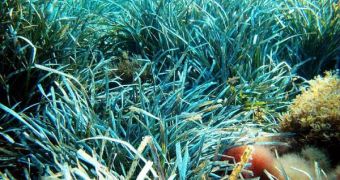Over the past 130 years, the human influence on the oceans has increased constantly, leading to such effects as ocean acidification, coral reef loss, but also to another major negative side-effect – the destruction of seagrass meadows. These areas of the world's waters, which can be likened to pastures for grazing animals, are of tremendous ecological and economical value, yet little attention has been given to them since fears that pollution might destroy the oceans first appeared. A new comprehensive study, featuring data collected from 215 sites around the world, shows that a quarter of meadows has been destroyed in the past 130 years, an inestimable damage.
Additionally, the new study has also found, while the decline rate of meadows was at about one percent each year in 1940, it sprung to more than seven percent per year by 1990, Nature News informs. “Seagrass loss rates are comparable to those reported for mangroves, coral reefs and tropical rainforests, and place seagrass meadows among the most threatened ecosystems on earth. Our report of mounting seagrass losses reveals a major global environmental crisis in coastal ecosystems, for which seagrasses are sentinels of change,” the authors of the new research explain in the latest issue of the journal Proceedings of the National Academy of Sciences (PNAS).
The scientists also enumerate a number of uses seagrass meadows have, despite looking like ordinary patches of underwater grass. They play a crucial role in trapping and storing carbon dioxide, as well as in fixating sediments, and offer a unique habitat for countless fish species, especially during the early days of life. Coral reefs also draw some of their endurance from the meadows, as do unique marine species such as the green turtle (Chelonia mydas) and the dugong (Dugong dugon), which only live around or on seagrass meadows.
According to the statistics accompanying the PNAS paper, since the 1980s, seagrass has been disappearing from the world's oceans at the alarming rate of 110 square kilometers per year, which has led to the conclusion that 58 percent of all investigated meadows are declining. On the bright side of things, some 25 percent of the investigated locations showed signs of improvement since the last time they were visited, while 17 percent exhibited no statistically significant changes to speak of. As a whole, between 1879 and 2006, 3,370 square kilometers of meadows were lost, from a grand total of 11,592 kilometers, which had been identified before. This is equivalent to a 30-percent decrease.
“It's nice to finally have some global numbers that can be used when advocating for the protection of seagrass. If you look at a regional scale, like in the Caribbean, we're going to lose the seagrass beds altogether [if something isn't done],” Conservation International Marine Climate Change Manager Giuseppe DiCarlo, who is also a member of the World Seagrass Association steering committee, told Nature News.

 14 DAY TRIAL //
14 DAY TRIAL //